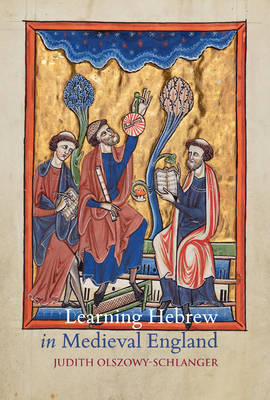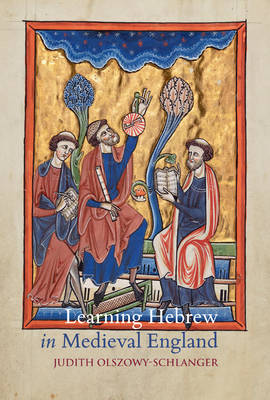
- Afhalen na 1 uur in een winkel met voorraad
- Gratis thuislevering in België vanaf € 30
- Ruim aanbod met 7 miljoen producten
- Afhalen na 1 uur in een winkel met voorraad
- Gratis thuislevering in België vanaf € 30
- Ruim aanbod met 7 miljoen producten
Learning Hebrew in Medieval England
Christian Scholars and the Longleat House Grammar
Judith Olszowy-SchlangerOmschrijving
The fountainhead of theology, a "doorway to wisdom," or a philological riddle: there were many reasons to learn Hebrew for inquisitive Christian minds in the Middle Ages. Although preoccupation with the meanings of the names of the Hebrew letters and their presumed inherent virtues can be traced back to the early Church Fathers, the rediscovery of classical sources and Aristotelian philosophy and the engagement with Graeco-Arabic sciences that marked the renaissance of the twelfth century also brought about an acute awareness of the need for a philological understanding of the Hebrew language.
In England in particular, various factors combined together to encourage and facilitate the study of Hebrew texts, not only among well-known writers such as Andrew of St Victor, Herbert of Bosham, and Alexander Neckam in the twelfth century, and Robert Grosseteste and Roger Bacon in the thirteenth, but also among English scholars whose names have not been preserved. They nevertheless produced bilingual Hebrew-Latin manuscripts in collaboration with Jewish scribes, along with manuals, textbooks, and reference aids to facilitate access to the sources.
Learning Hebrew in Medieval England presents an edition and analysis of one such learning tool: a thirteenth-century grammar written in Hebrew, Latin, and Anglo-Norman French (the vernacular language of the Jews of England) in a complex combination of Hebrew and Latin alphabets. It can be traced to the Benedictine Ramsey Abbey in East Anglia and is preserved in a unique copy in a volume that is today part of the private collection of the Marquess of Bath at Longleat House in Wiltshire.
Specificaties
Betrokkenen
- Auteur(s):
- Uitgeverij:
Inhoud
- Aantal bladzijden:
- 228
- Taal:
- Engels
- Reeks:
Eigenschappen
- Productcode (EAN):
- 9780888442307
- Verschijningsdatum:
- 27/03/2023
- Uitvoering:
- Hardcover
- Formaat:
- Genaaid
- Afmetingen:
- 158 mm x 234 mm
- Gewicht:
- 539 g

Alleen bij Standaard Boekhandel
Beoordelingen
We publiceren alleen reviews die voldoen aan de voorwaarden voor reviews. Bekijk onze voorwaarden voor reviews.








